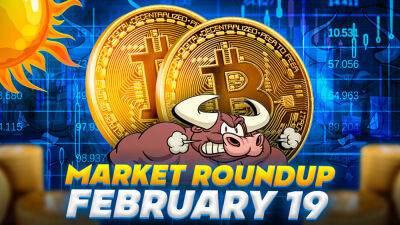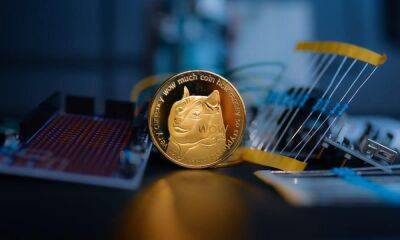Bitcoin Volatility Expectations Remain Subdued Despite Hot US Inflation Figures – What This Means For the BTC Price
In wake of Tuesday’s US Consumer Price Index (CPI) data, which confirmed an expected jump in MoM price pressures and revealed a smaller-than-expected decline in the YoY rate of inflation, Deribit’s Bitcoin Volatility Index (BTC DVol) surprised some analysts by remaining broadly unchanged. The lack of movement in the BTC DVol, which was last at 48 on Wednesday versus 50 on Monday and remains not far above record lows, matches the post-CPI mood seen in the Bitcoin market.
Bitcoin, last changing hands around $22,800, has rallied about $1,000 or 4.5% from its pre-US CPI data levels on Tuesday and is up around 4.7% on the week. That’s despite Tuesday’s CPI data and stronger-than-expected US Retail Sales data on Wednesday combining to push US 2-year yields around 10 bps so far this week, and the US Dollar Index (DXY) up around 0.5%.
The move’s in US bond and currency markets reflect markets upping their US Federal Reserve tightening bets. According to the CME’s Fed Watch Tool, the odds of the Fed raising interest rates by at least 75 bps (to at least a 5.25-5.50% target range) are now seen at above 50%, as implied by 30-Day Fed Funds futures pricing data. That’s up from an implied probability of only around 6.0% this time last month.
Given moves across bond and currency markets, many analysts are shocked at Bitcoin’s resilience. Higher yields typically weigh on Bitcoin as 1) Bitcoin is a non-yielding asset, so the so-called “opportunity cost” of holding it rises as short-term US interest rates rise and 2) higher yields on US bonds, an asset that is considered risk-free, decreases the incentive to hold assets that are considered risky, like Bitcoin, which many view as a new, speculative financial technology.
Meanwhile, when higher
Read more on cryptonews.com








![Bitcoin [BTC]: Trend reversal on the horizon? Analysts say… - ambcrypto.com](https://finance-news.co/storage/thumbs_400/img/2023/2/19/56394_hur.jpg)






